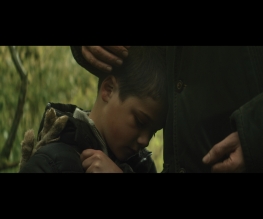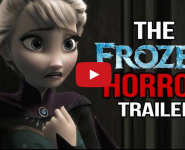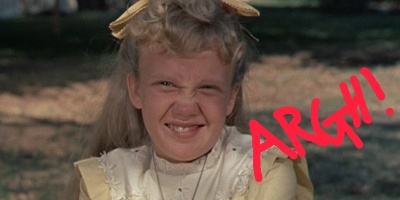In The Dark Half

In The Dark Half opens with feminine breath sounds over an outdoorsy thudding, and we see the grey Bristol countryside through the eyes of 15-year-old Marie (Barden), out for her regular run from her DIY-junkie mother Kathy (Marshal) through the hills. In what turns out to be just the first example of In The Dark Half veering left when you were expecting right, Marie seems ostensibly normal, right up until she starts stealing half-dead rabbits from Watership Down-style snares. Erm, alright then.
[swfobj src=”http://vimeo.com/moogaloop.swf?clip_id=29420642&server=vimeo.com&color=00adef&fullscreen=1″ width=”400″ height=”225″]
The audience visibly cringes as she buries the rabbits in a strange stone shed (once she’s made them fully dead, of course), highlighting a obsessive compulsion for ritual that takes us from drama into horror. The snares belong to her rifle-happy hunter neighbour, Filthy (Curran), who lives with his 6-year-old son Sean next door to her. Whilst it’s clear that no one in the nameless setting trusts Filthy, equally clear is his adoration of his son – an island of normalcy in a world which in every other respect, is so far from it.

In The Dark Half features a lot of dichotomies, and has a sense of balance and equality about it; just as Filthy’s relationship with his son is a touchstone of self-recognition to which the unsettled audience can cling, Marie’s authentic adolescence hangs over her like a cloud of Impulse body spray. When Filthy asks her to babysit one evening, Marie appears at his door bright-eyed and glossy-lipped, her crush on the only adult male in her life quite literally painted all over her face. Disappointed by his ignorance of her feelings, Marie’s wayward friends show up in the babysitting plot of many a 70s slasher B-movie. Knowing, as we do, that the next scenes will depict Sean’s last few hours alive, the sharpness of every time Marie snaps at him, every question he asks, every step he makes to his future, are all heightened – we are certain of Sean’s endgame, but uncertain of how he’s going to get there.

When little Sean finally does kick the bucket, in a beautifully-lit scene, production designer Max Bellhouse somehow manages to set the split-second frame alight with pain in the colours and textures he chooses. The plot moves quickly from there – the formality of Sean’s postmortem and funeral and a harrowing encounter with a grief counsellor fill in the space until it becomes apparent that Sean has not quite left the world, and in a few ways, is almost taking Marie onto the other side with him. It’s a shame that this is the point when the film starts to look a little bit like a Horror-By-Numbers kit – tropes that Scary Movie made fun of a decade ago are trotted out as if they are God’s gift to terror. But just when you’ve finished lamenting that no one knows how to properly fuck an audience up any more, something happens which will, without a doubt, hit you in the face.
Whilst the twist isn’t quite enough to correct the derivative sins of In The Dark Half, which have nothing to do with its budget (rather, its lack thereof), it lends a horrifying dimension to its ultimately lovable characters. Performances across the board are uniformly strong – the powerfully desolate social outcase portrayed by Tony Curran (Red Road) is comfortably in his wheelhouse, and Jessica Barden (Tamara Drewe) marks herself as one to watch – she made a character which could easily have been an irritating twit only very slightly twit-like. Combine all this with the challenge production faced under the BBC Films and Bristol City Council-backed ‘micro-studio’ initiative, and you realise that a really quite remarkable bit of filmmaking went on here.
Feel free to see it when it comes out on general release on August 10th, as long as you’ve got something cheerful lined up for afterwards.






I am confused. What did the spanish princess have to do with ANYTHING?
I need to know this too! It’s driving me crazy!!
This has bothered me for months. Just lingering in the back of my mind. The scenes I believe are from the movie Princess Kaiulani (2009) with Q’orianka Kilcher. If you were like me and watched this movie on Netflix, it must be one of those rumored Netflix crops or edits. Seriously netflix? Must you make things difficult for real movie thinkers?
As of four minutes ago, I reported it to Netflix and they said they would flag it to be looked at. We will see if that happens. It took them forever to put the right version of Blown Away (1994) up. They had some b rated raunchy movie up instead. Not making Jeff Bridges proud I am sure.